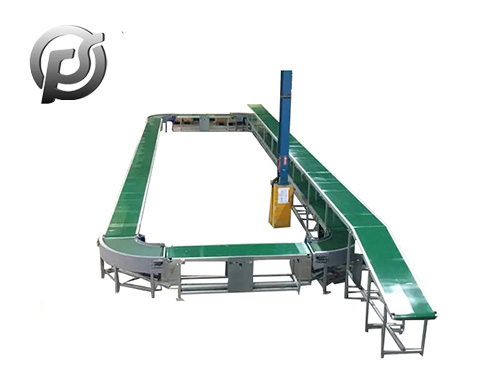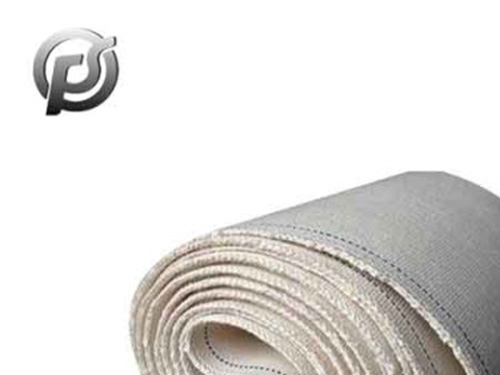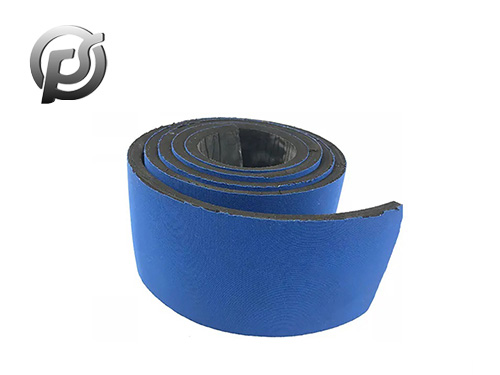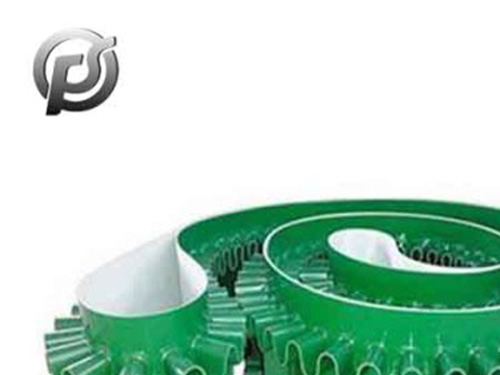What are the causes of the joint cracking often produced by the
conveyor belt? Here is to introduce to you, I hope our introduction may be better to help you. High temperature resistant conveyor belt is made of multi-layer rubber cotton canvas (terylene cotton) or polyester canvas covered with high temperature resistant or heat resistant rubber, vulcanized together by high temperature, suitable for conveying hot coke carbon, cement, slag and hot castings below 175℃.
1. There are usually three kinds of conveyor belt joint methods, which are distinguished as mechanical joints, cold glue joints and hot vulcanized joints. The strength of conveyor belt joint is lower than the strength of its own belt body. When the conveyor belt applies mechanical joint, the joint strength can only reach 40-50% of the belt body strength. When the conveyor belt is bonded with cold adhesive, the joint strength can reach 60-70%; It is assumed that the strength of the conveyor belt joint can reach 80-90% when the hot vulcanized joint is selected. (The joint method is correct and the strength of the joint part of the conveyor belt without quality faults is relatively low. If the bonding method is incorrect, the strength of the conveyor belt joint will be even lower. If the cutting and conveyor belt grinding damage the next layer of canvas, the grinding is moderate, the lap length is not good, the number of steps is not good, the rubber function of the joint is not good or the self-sulfur has taken effect, the grinding is moderate, rust, etc., the strength of the joint will be greatly reduced. In application, it is easy to show the scene of the conveyor belt joint disconnection and cracking. Together, if the conveyor belt does not choose sealing glue, or the direction of the joint is wrong, the conveyor belt joint (surface glue part) will also show the cracking scene. Avoid cracking from the source, strengthen the quality control of the coal conveyor belt, increase the decontamination equipment to remove impurities, reduce magazines and multiple pieces of coal, in recent years with the progress of coal quality i, because of impurities tear the conveyor belt scene greatly dropped;
2, add the cracking inspection equipment, check the results in the shortest time, issue an alarm and stop, because the belt tear is formed by a variety of factors, can not completely avoid the cracking of the conveyor belt, the most important recently used tear prevention equipment and inspection equipment is the tear inspection equipment, usually located in the falling point, formed by the sensor with the controller, the sensor installed under the conveyor belt or chute, The controller is installed on the machine side or indoor, when the sundries tear the conveyor belt, through the sundries or materials of the conveyor belt knead. High temperature resistant conveyor belt is made of multi-layer rubber cotton canvas (terylene cotton) or polyester canvas covered with high temperature resistant or heat resistant rubber, vulcanized together by high temperature, suitable for conveying hot coke carbon, cement, slag and hot castings below 175℃.
 Stone Belt Conveyor: Efficient Material Handling Solution for Mining and Construction
Stone Belt Conveyor: Efficient Material Handling Solution for Mining and Construction
 Exploring the Dynamics of Conveyor Belt Manufacturing in China
Exploring the Dynamics of Conveyor Belt Manufacturing in China
 PE Conveyor Belts: Characteristics, Applications, and Advantages
PE Conveyor Belts: Characteristics, Applications, and Advantages
 Stone Conveyor Belt: Enhancing Efficiency and Productivity in Material Handling
Stone Conveyor Belt: Enhancing Efficiency and Productivity in Material Handling